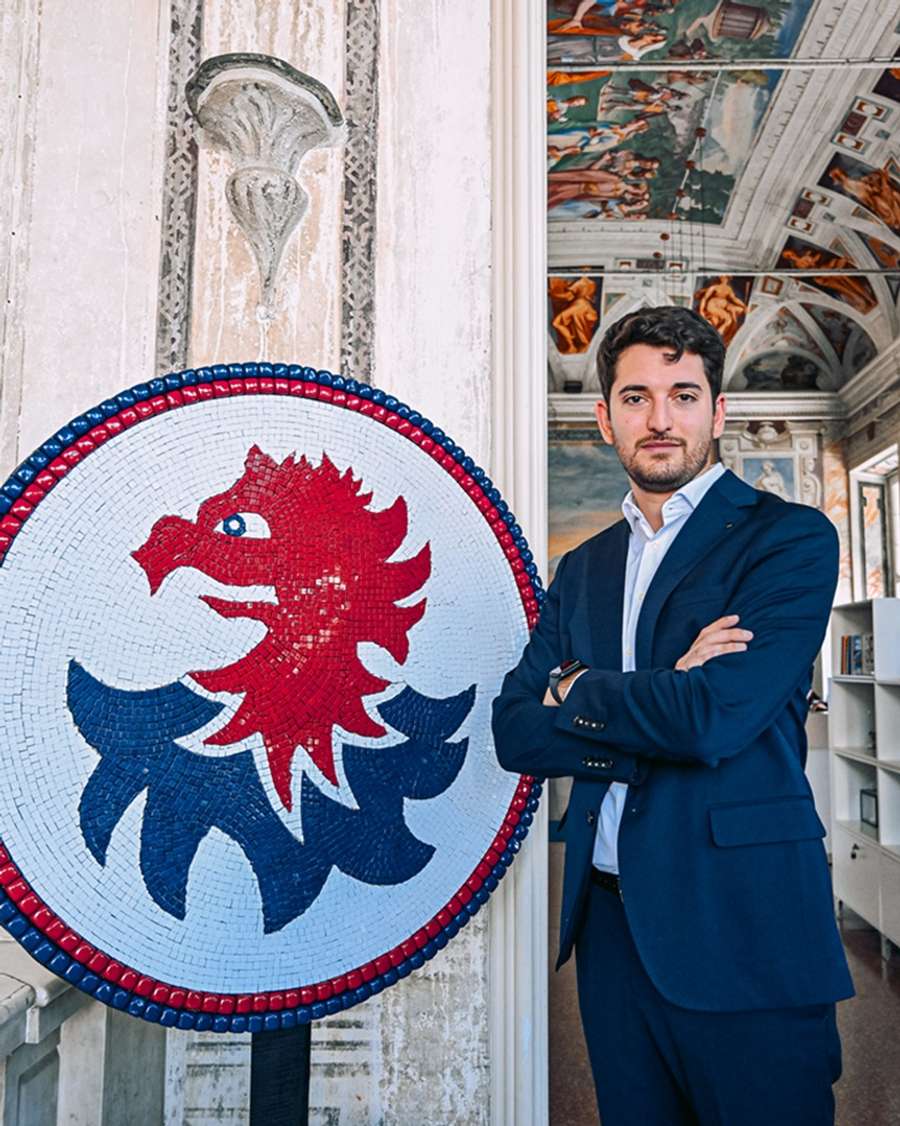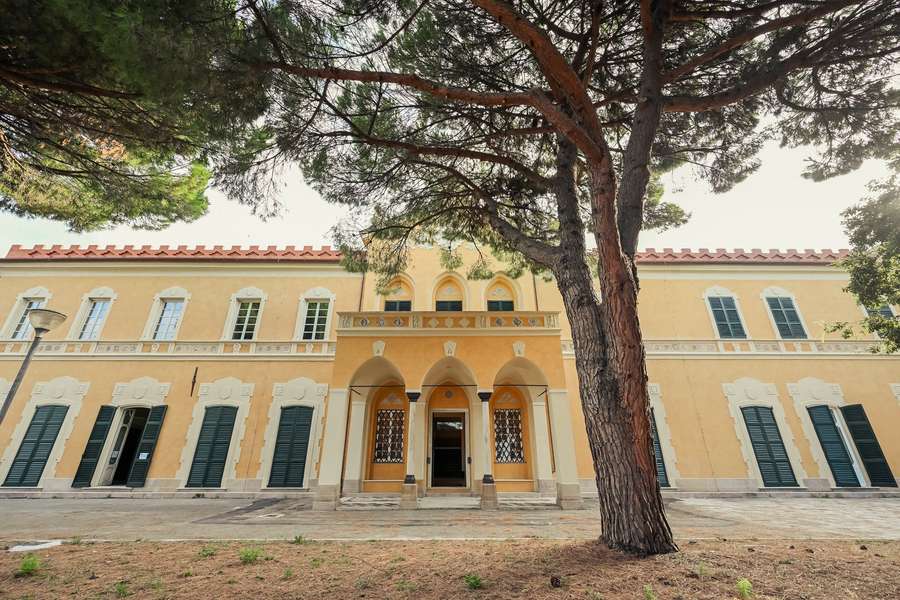The oldest club in Italian football, Genoa, inaugurated its new youth training centre, the Badia di Sant’Andrea, on August 28th. This former abbey, dating back to the 12th century, sits atop the Erzelli hill. Not only is Genoa the oldest club in Italy, but it’s also known for being the first to establish a youth project ('sezione giovanile') as early as 1902.
Driven by this tradition, the Rossoblu have taken a major step in their history by renovating this centuries-old building, steeped in history, to shape their future. Nearly €4.5 million has been invested, with fans involved through a subscription campaign that gathered a thousand donors. Genoa now has its new academy, set to be completed by December 2026.
"It’s a wonderful coincidence that the oldest club in Italy, with the oldest youth academy, has been able to invest in such a historic building, so rich in culture, and make it available to our young players," said Roberto Trapani, head of Genoa’s Youth Sector.
"The club maintains this important link, and it’s certainly a source of pride and honour for us. The Badia is a historic symbol of the city and has now becomes the club’s home, warm and welcoming, for families and children."
Youth development: A duty and necessity for Genoa
"The decision to come to Genoa was very easy. When I spoke with Andres Blazquez and President Dan Sucu, they immediately made it clear that for the club, the youth section is not just a philosophy, but a necessity.
"Investing in such an important facility is proof of that. To improve its youth sector, the club wanted - and needed - to invest in a beautiful, fascinating, magnificent, and historic infrastructure like the Badia," Trapani explained.
In a football world that’s constantly changing, where competing with historic clubs is increasingly tough for so-called 'mid-table' teams, investing - or betting - on youth can be a medium to long-term solution. That’s the direction Genoa wants to take in the coming seasons.
Since their return to the top flight after the 2022/23 season, the Red and Blue have been used to mid-table finishes in Serie A, but currently find themselves in a tricky spot (18th), prompting management to replace Patrick Vieira with Daniele De Rossi earlier this month.
The AS Roma legend signed a six-month contract, with an automatic one-year extension if the club stays up. The short-term goal is clearly to remain in the top division; De Rossi admitted he joined Genoa "out of passion for the club and the unique atmosphere at Luigi Ferraris."
If Genoa stay up, his mission will include quickly integrating academy players into the first team.
A true product of Italian football, the 42-year-old coach joins a club determined to give its future a chance, just as Roma did for him in 2001. He’s already started, bringing up several 'Primavera' (reserve team) players since taking charge of first-team training, including the three Frenchmen, Gael Lafont, Mamedi Doucoure and Jayden Nsingi.

"Joining Genoa was a natural choice, because we shared the same ambition to develop an academy focused on bringing as many young players as possible into the first team," Trapani continued.
"And here, it’s much easier, because the gap between the Primavera and the first team is smaller than at other top clubs. The first thing I noticed when I arrived was how much the club values its youth."
"It’s not just talk - it’s real, from both our president and our CEO. That’s what I like most here. You know, in Italy, people often say youth is important, but in practice, it’s not always true.
"Here at Genoa, youth really is a priority. On one hand, it puts a lot of pressure on you because you have a big responsibility. On the other hand, it’s an honour to be part of a structure that sends more players to Serie A every year than other clubs."
"Given last season and where I came from at OM (Marseille), Genoa’s project gave me a new lease on life,” Lafont told Flashscore.
"As soon as you join training, you feel the staff is close to you, they listen. They don’t hesitate to keep us longer at training to work. That’s rare when you come from the youth teams, because usually the focus is on the first-team players."
From the Badia to Serie A action
Three pitches, a rehab centre, a cafeteria, a kitchen, a study room, a lounge, two offices (one for the youth section and one for the women’s section), a reception area, a meeting room, and a laundry: the Badia di Sant’Andrea offers the best conditions for the 39 residents living daily in the renovated monastery.
"Some Primavera players live here, and it goes down to the U15s. The kids grow up here until they’re 18. Once they’re adults, they leave the Badia, and we help them find a house or apartment. In total, there are 39 players, but the full capacity is 40.
"We keep one room free for youngsters coming from outside for trials. So, the maximum is 40 rooms. After the second phase of work, we’ll have 10 more rooms, bringing the total to 50. Plus, some rooms that are currently singles will become doubles," Trapani explained.
"You can feel the club has taken a big step with this investment. Everything is better organised compared to last year, and the Badia really feels like a proper academy," said Mamedi Doucoure (18), Primavera centre-back.
Jayden Nsingi (also 18), another centre-back, added: "We wake up in the morning, have breakfast. Then at noon, we eat. At 1 pm, a minibus picks us up and takes us to the pitch for training. It’s about 10 minutes away.
"Same for the return - after training, the minibus brings us back to the Badia. Dinner is at 8 pm. Our training sessions are in the afternoon, except on match days, when they’re in the morning."
"For me personally, it’s going really well. I have my own room, I’m alone (laughs). At first, I wanted to get my own apartment, but since I have a single room, while some have to share, I thought, ‘I’ll stay here.’ I eat here, I do everything! It’s better for me, I’m not someone who cooks. The club really looks after us," said the former Hellas Verona player.
Genoa’s goal is to give its young players the best possible environment. With the aim of integrating as many youth players as possible into the first team next season, the Italian club has made the Badia a true 'made in Genoa' family home for its prospects.
Arriving from OM last summer, Lafont was naturally anxious about his first days away from his hometown, Marseille. But those doubts quickly disappeared: "Integration happens very quickly. The week I arrived, I played the next one and felt good. Honestly, I think it’s a good sign for the future. Also, having Mamedi and Jayden here - other French guys - helped me settle in."
"Our main goal is to help a high-potential Primavera player reach the first team as quickly as possible," stated Trapani.
“Sometimes, some players need more time and might need to go out on loan. That’s why their contract is automatically extended, and the player is loaned to one of our partner clubs.
"It’s important to make them understand the project isn’t just for one year, but for several. Once they’re out, we take another year to monitor them and ensure a strategy for their return to Genoa."
Reviving a whole system through tradition
Then there are special cases, like Honest Ahanor, last season’s breakout star, a 17-year-old left-back transferred this summer to Atalanta for €17 million. That kind of money is a boost for a club seeking financial balance through such deals, even if it’s not yet a regular practice.
Similar moves happened with Luca Lipani two summers ago, sold to Sassuolo for €8 million, and Nicolo Rovella, who joined Juventus in 2021 for €26 million. Only three major sales so far - not a huge number, but that could change with the club’s new direction, the opening of the Badia, and the drive to "bring young players into the first team."
"For me, it’s clear. We have young players who are increasingly ready to make the step up. I’m thinking of Lafont, Nuredini, Celic, Doucoure, Nsingi, Zulevich, Galvano, Gibertini, or Scaglione.
"But what we need to do is avoid putting too much pressure on them, and not be afraid. In Italy, there has often been hesitation about giving young players a chance because of their age. That’s what we need to change," Trapani insisted.
In a country where the youth development system has been in crisis for years, Genoa is trying to restart the engine. While some of its players come from abroad, many are Italian. A project like this can only be positive for Italian football.
The example of Ahanor should be seen as "a reference point for all young players," in a club proud to be "the first in Italian football history to launch a youth section, the sixth in Europe."
Through this tradition, the Red and Blue want to give new momentum to their league, which currently has the highest percentage of foreign players in professional squads (62%). But the door is also open to young players from abroad, ready to discover a new philosophy and a different approach to football.
"The difference with France is that when we play a match, we spend time analysing the opponent, watching them the week before and getting to know them," explained Doucoure.
"Tactically, we watch two or three videos a week. You already know how your opponent plays. It’s just like the pros - very tactical. Basically, if you mess up, if we concede a goal, it’s because someone made a tactical mistake."
"What struck me most is the aggression," added Nsingi. "In France, it’s a bit more relaxed. The strikers don’t press much. But here, the first defender is the attack, and they don’t hesitate to press high."
"For me, I feel like they understand that as attackers, they also have to defend. They put as much determination into defending as attacking," continued Lafont.
"Overall, I think the Primavera league is very competitive. You can feel everyone is involved in the team and the project. In France, it’s more individualistic."
It’s a tough league, with Genoa currently third, two points behind leaders Fiorentina and one behind second-placed Roma. Chasing the Red and Blue are teams like Inter, Milan, Juve, and Napoli, though the three French players stress that the league is "very unpredictable" - you can go from first to 10th in just two weeks.
"The results so far are positive, but in a way, they’re unexpected. Realistically, we might be overachieving," Trapani concludes.
"As I always say, our Scudetto, our victory, shouldn’t be winning the Primavera. Winning it would be amazing. But our Scudetto should be making sure as many young players as possible get minutes in this league this season and next.
"That’s our goal, and it will help us reach the club’s other targets, like quickly integrating youth into the first team."


